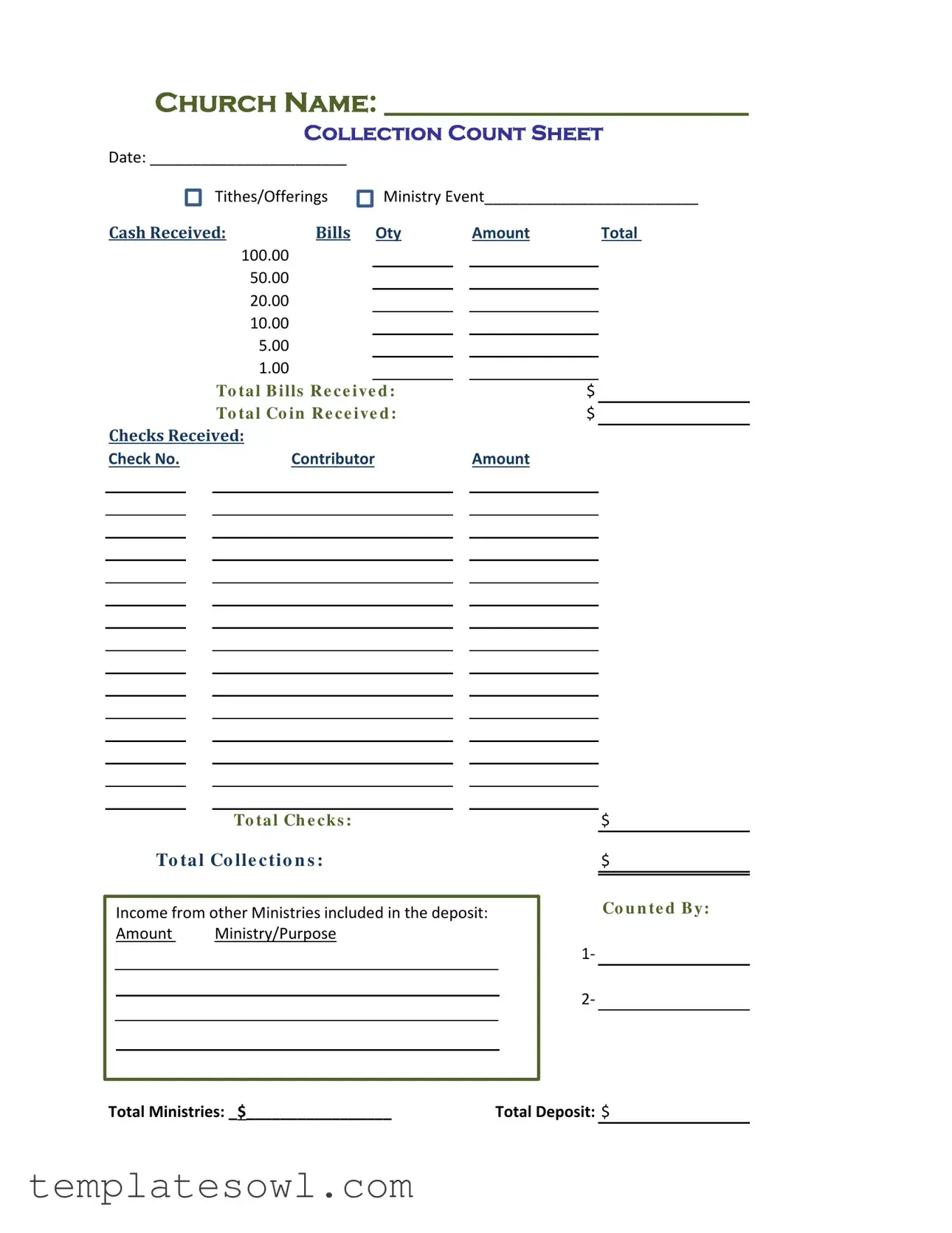What is the purpose of the Offer Report form?
The Offer Report form serves to document and track the financial contributions received by a church during services or events. It ensures transparency and accountability in managing funds, allowing churches to accurately record tithes and offerings for each collection event.
What information is required on the Offer Report form?
Key details include the church name, date of collection, event associated with the collection, and breakdowns of funds received in cash and checks. It also requires identifying the number of bills and checks along with their respective amounts. Other notes on income from additional ministries may also be included.
How should cash contributions be recorded?
For cash contributions, the form provides a section to log the quantity and amounts of each bill. You should total the amount of cash received, including both the total amount of bills and the total coins collected. Be thorough to ensure the final figures are accurate.
How do I record checks received?
Each check should be documented by noting the check number, the contributor’s name, and the amount on the Offer Report form. Summing these amounts will give you the total for checks received. This step is crucial for financial audits later on.
What should be done with income from other ministries?
If your collection includes donations directed toward other ministries, you should note the ministry name or purpose along with the corresponding amount. This way, proper credit is given, and all funds are accounted for in the total collection.
Who is responsible for counting and recording the collections?
Typically, a designated team within the church is responsible for counting collections. The form provides space for recording who counted the cash and checks, ensuring accountability. Often, two individuals should complete this process together to verify accuracy.
What is meant by the ‘Total Deposit’ section?
The ‘Total Deposit’ section summarizes the total amount collected that will be moved to the church’s bank account. It combines cash receipts and checks to present an overall total, offering a clear picture of the day's financial activity.
Can the Offer Report form be modified for specific events?
Yes, while the standard form serves its purpose well, churches may modify it to better fit their unique needs. This could include adding sections for special contributions or unique fundraising events, provided the essential information is still captured.
How often should the Offer Report be completed?
The Offer Report should be completed for every collection event, whether it occurs weekly, monthly, or during special occasions. Regular documentation helps maintain accurate financial records and ensures that accountability is kept consistently.
What should be done with the completed Offer Report?
After filling out the Offer Report form, it is recommended to store it securely, whether in physical form or digitally. This report not only facilitates financial oversight for church leadership but may also be necessary for tax purposes and external audits.

